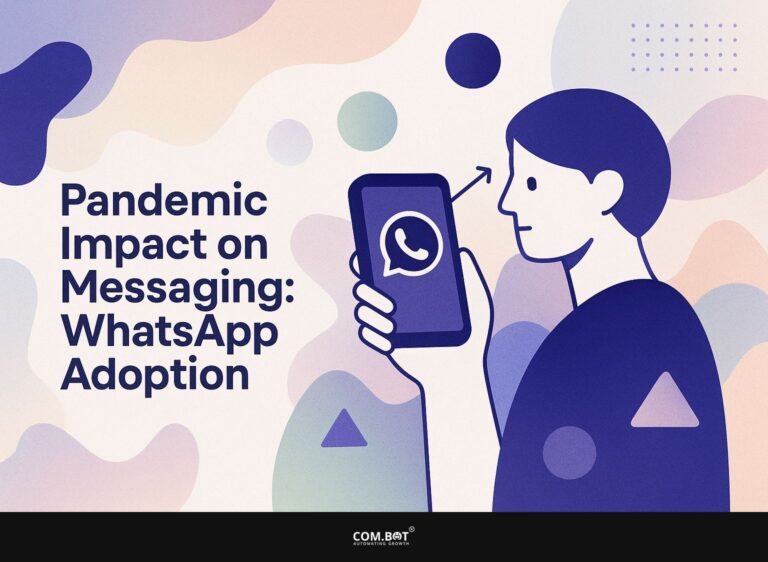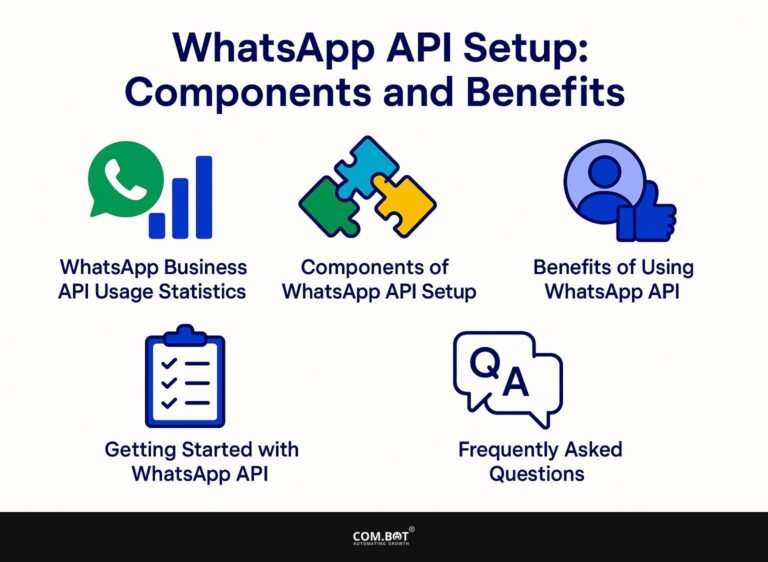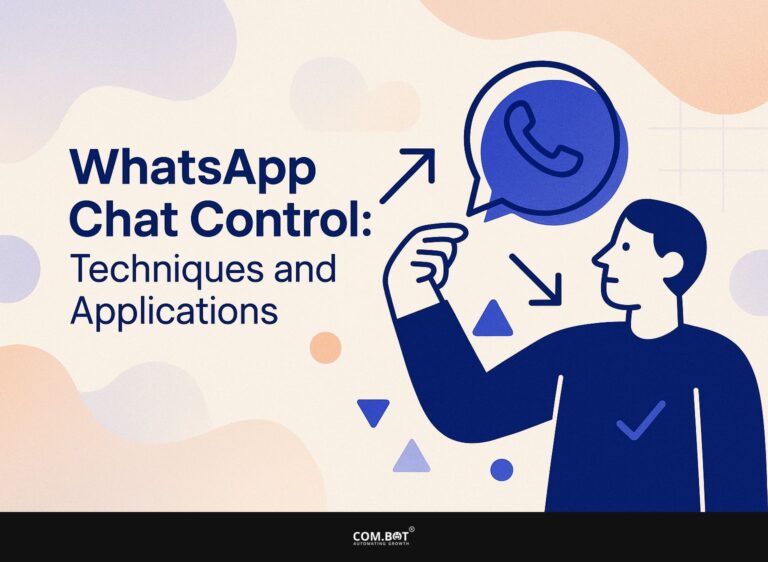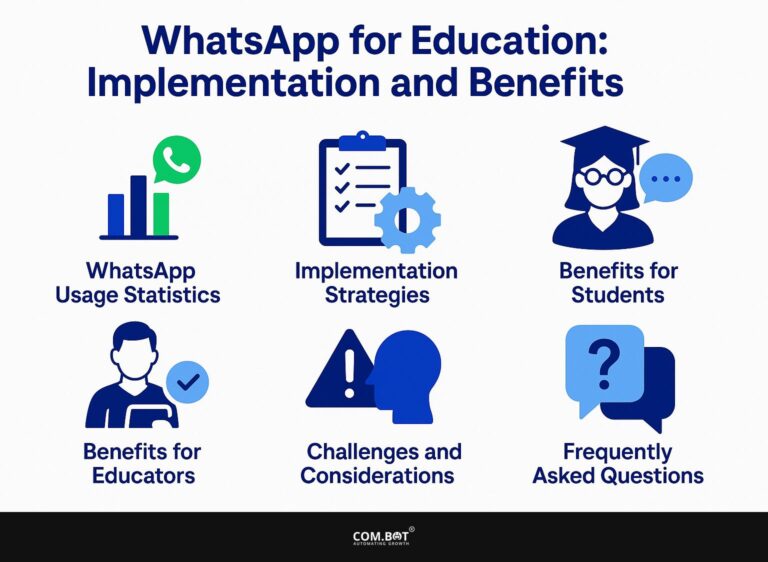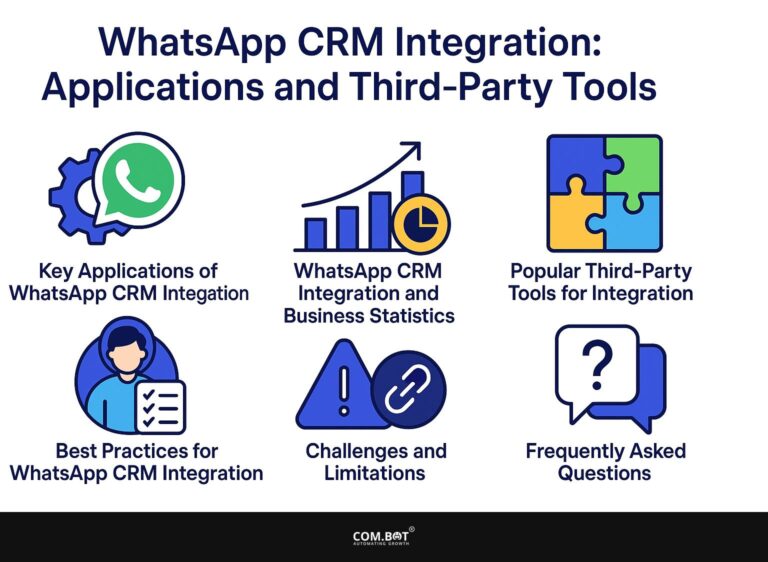Campaign Analytics: Features and Optimization Techniques
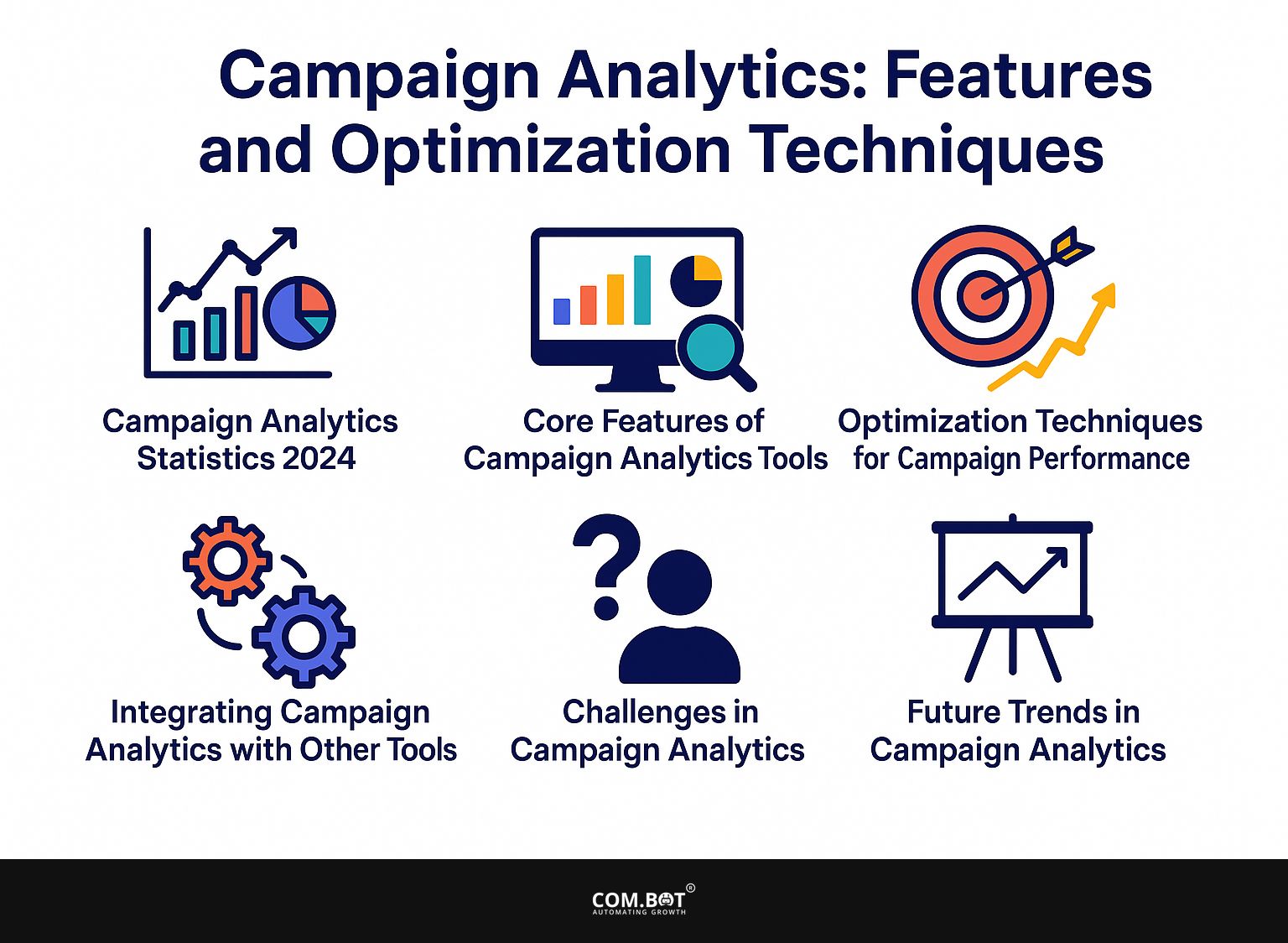
Getting useful data from campaign analysis is key to getting the most out of your marketing budget. By learning about performance metrics and key performance indicators, you can improve your strategy and make your campaign more effective.
In this article, we’ll look at key features of campaign analytics tools and share effective ways to improve your marketing activities. Prepare to turn your data into useful information that leads to success.
Key Takeaways:
- Campaign analytics provides real-time data tracking, segmentation, and reporting for effective campaign performance analysis.
- Methods like A/B testing and using data to make decisions can make campaigns work better and increase returns on investment.
- Using campaign analysis together with CRM and marketing tools helps to clearly see how well a campaign is doing.
- 1 Campaign Analytics Statistics 2024
- 2 Core Features of Campaign Analytics Tools
- 3 Optimization Techniques for Campaign Performance
- 4 Integrating Campaign Analytics with Other Tools
- 5 Challenges in Campaign Analytics
- 6 Future Trends in Campaign Analytics
- 7 Frequently Asked Questions
- 7.1 1. What is Campaign Analytics and why is it important?
- 7.2 2. What are the key features of Campaign Analytics?
- 7.3 3. How does Campaign Analytics help with campaign optimization?
- 7.4 4. What is audience segmentation and how does it benefit campaign optimization?
- 7.5 5. What is A/B testing and how can it be used in Campaign Analytics?
- 7.6 6. How can businesses use real-time reporting in Campaign Analytics to improve their campaigns?
1. Definition and Importance
Campaign analytics is the process of gathering and studying performance data to see how well marketing activities are doing. By monitoring important metrics like click-through rates (CTR) and conversion rates, businesses can evaluate which strategies connect with their audience.
For example, tools like Google Analytics provide detailed information about user actions, enabling immediate changes. Tracking CTR helps identify the most effective headlines or calls to action, while monitoring conversion rates reveals how users progress from interest to purchase.
Checking these numbers often helps make good choices that improve user happiness and increase sales (the Com.bot Conversational Analytics Dashboard offers advanced features for such insights).
2. Key Metrics Overview
Key measurements such as conversion rate and cost per conversion are essential for evaluating a campaign’s performance and need careful monitoring. To effectively track these metrics, use tools like Google Analytics and HubSpot.
For instance, Google Analytics allows you to measure conversion rates by setting up goals aligned with your campaign objectives. You can check how much each conversion costs by using tools like Facebook Ads Manager that show the details of your ad expenses for each conversion.
Checking these measurements often can help you spot patterns and improve your campaigns-for instance, changing your ad targeting based on which groups have the highest conversion rates.
Campaign Analytics Statistics 2024
Campaign Analytics Statistics 2024
Short-Form Video and Marketing Impact: Short-Form Video Usage
Short-Form Video and Marketing Impact: Engagement Rates for Short-Form Platforms
Short-Form Video and Marketing Impact: Video Marketing Usage and Effectiveness
The Campaign Analytics Statistics 2024 Data shows trends on the rising impact of short-form video content and its effects on marketing plans. With the increasing consumption of digital media, marketers are recognizing the potential of short-form video as a tool for engagement and brand visibility.
Short-Form Video Usage indicates that 29.18% of marketers are using short videos to increase their marketing efforts. This format’s popularity lies in its ability to deliver concise and impactful messages that capture viewers’ attention quickly. Moreover, 21% of marketers report achieving the highest return on investment (ROI) from this video format, suggesting its effectiveness in driving engagement and conversions. In response to these positive outcomes, 17.13% of marketers plan to put more money into short videos next year, showing the move towards more lively content plans.
When examining Engagement Rates for Short-Form Platforms, YouTube Shorts leads with an engagement rate of 5.91%. This is closely followed by TikTok at 5.75% Both platforms are popular for their active users and ability to spread content quickly. Facebook Reels, while lower at 2%, still provides a good chance to connect with particular groups of people. These figures demonstrate the diverse engagement potential across platforms, encouraging marketers to tailor content to each outlet’s strengths.
Video Marketing Usage and Effectiveness shows significant adoption, with 89% of businesses utilizing video marketing. The common use of video highlights its importance as a key communication tool in today’s marketing. Among these, an impressive 93% of marketers report positive ROI from video marketing, affirming its effectiveness in meeting marketing objectives. Additionally, 68% of marketers planning to adopt video marketing indicate the expanding scope of video as a primary marketing channel.
Overall, the Campaign Analytics Statistics 2024 Research shows that short videos and video promotions are very important. The trend towards increased investment and adoption reflects an industry-wide recognition of video content’s power to engage audiences and generate meaningful returns. Marketers need to know how often people interact with content on different platforms and match their content to what consumers like to fully use video marketing.
Core Features of Campaign Analytics Tools
Effective campaign analytics tools include features that help with real-time tracking of data, targeting audiences, and strong reporting abilities. Those curious about leveraging AI for enhanced data interpretation might appreciate our insights on harnessing AI bots for business intelligence.
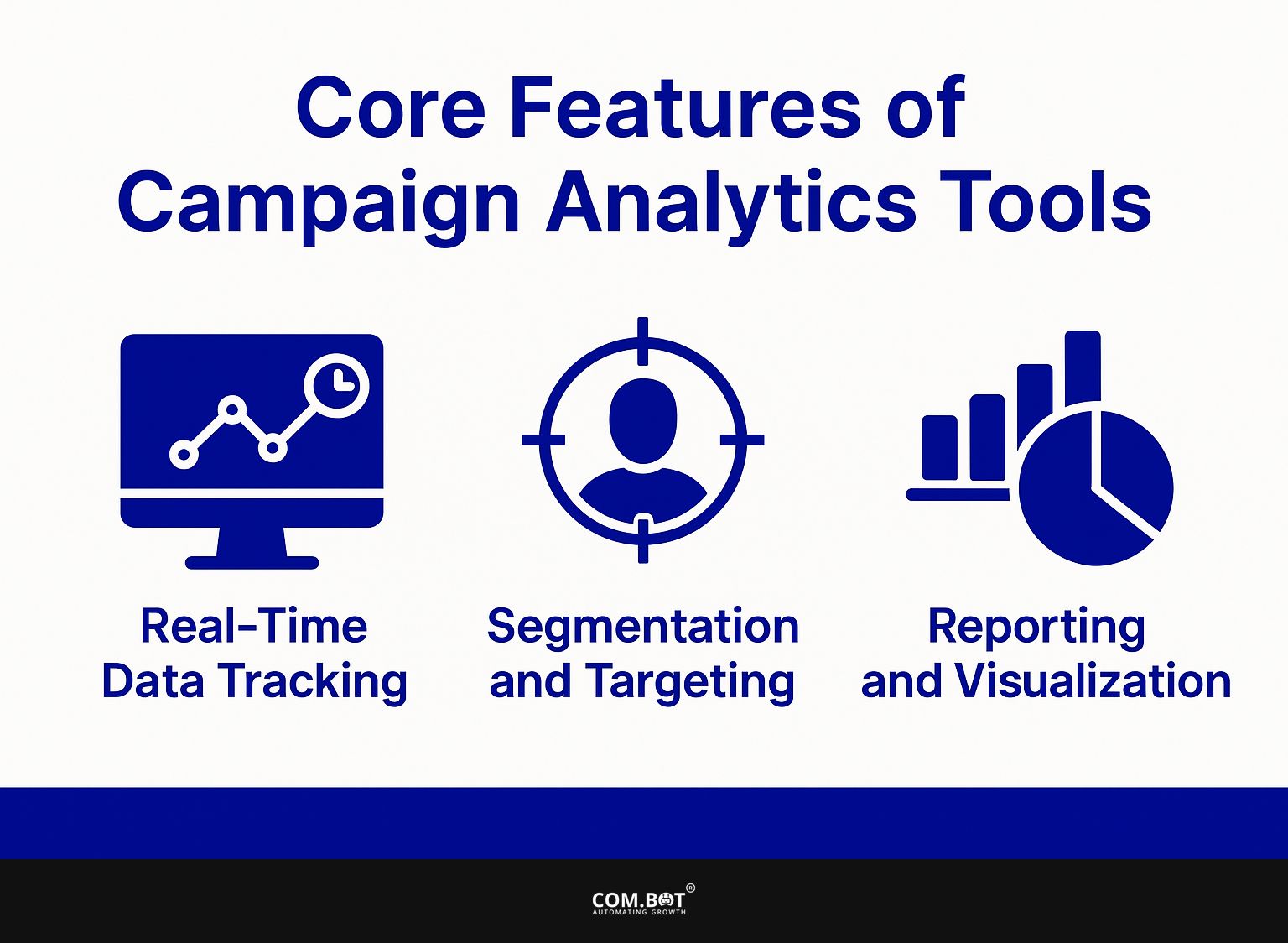
1. Real-Time Data Tracking
Real-time data tracking enables marketers to monitor campaign performance instantly, allowing for quick adjustments and optimization.
For example, using Adjust allows marketers to track user interactions such as app installs and in-app purchases in real-time.
A campaign promoting a new mobile game found that conversion rates dipped during specific hours. By analyzing the data with Adjust, the team adjusted their ad spend to focus on peak user activity times, leading to a 30% increase in conversions within just one week. This rapid response showcases the power of real-time analytics in refining marketing strategies effectively.
2. Segmentation and Targeting
Segmenting your audience into specific groups allows you to send personalized messages, increasing user involvement and improving conversion rates.
Tools like Adjust Audience Builder enable marketers to create segments based on behavior, such as purchasing history or website interactions, as well as demographics like age and location.
For example, a fashion retailer using this tool found that targeted campaigns aimed at 18-24-year-olds increased their conversion rates by 35%.
In the same way, a travel company found that sending customized emails to different groups based on how they travel led to a 50% increase in interaction. Using this data makes marketing work both productive and successful.
3. Reporting and Visualization
Effective reporting and visualization turn complicated data into useful information, helping people make better decisions. Using tools like Google Data Studio can greatly improve your reporting. With its capability to create visually appealing, interactive dashboards, you can present data on key metrics such as conversion rates and user engagement.
For example, you can link your Google Analytics account to show website performance changes over time. Incorporating visual elements like graphs and charts allows stakeholders to grasp significant trends quickly.
Distributing these reports to coworkers allows for collaboration and fast adjustments to plans, resulting in improved results.
Optimization Techniques for Campaign Performance
Finding good methods to make campaigns more successful and maximize marketing budgets is essential. For those looking to refine their strategies, A/B testing can offer valuable insights. Learn more about Com.bot Chatbot A/B Testing to see how incremental changes can lead to significant improvements.
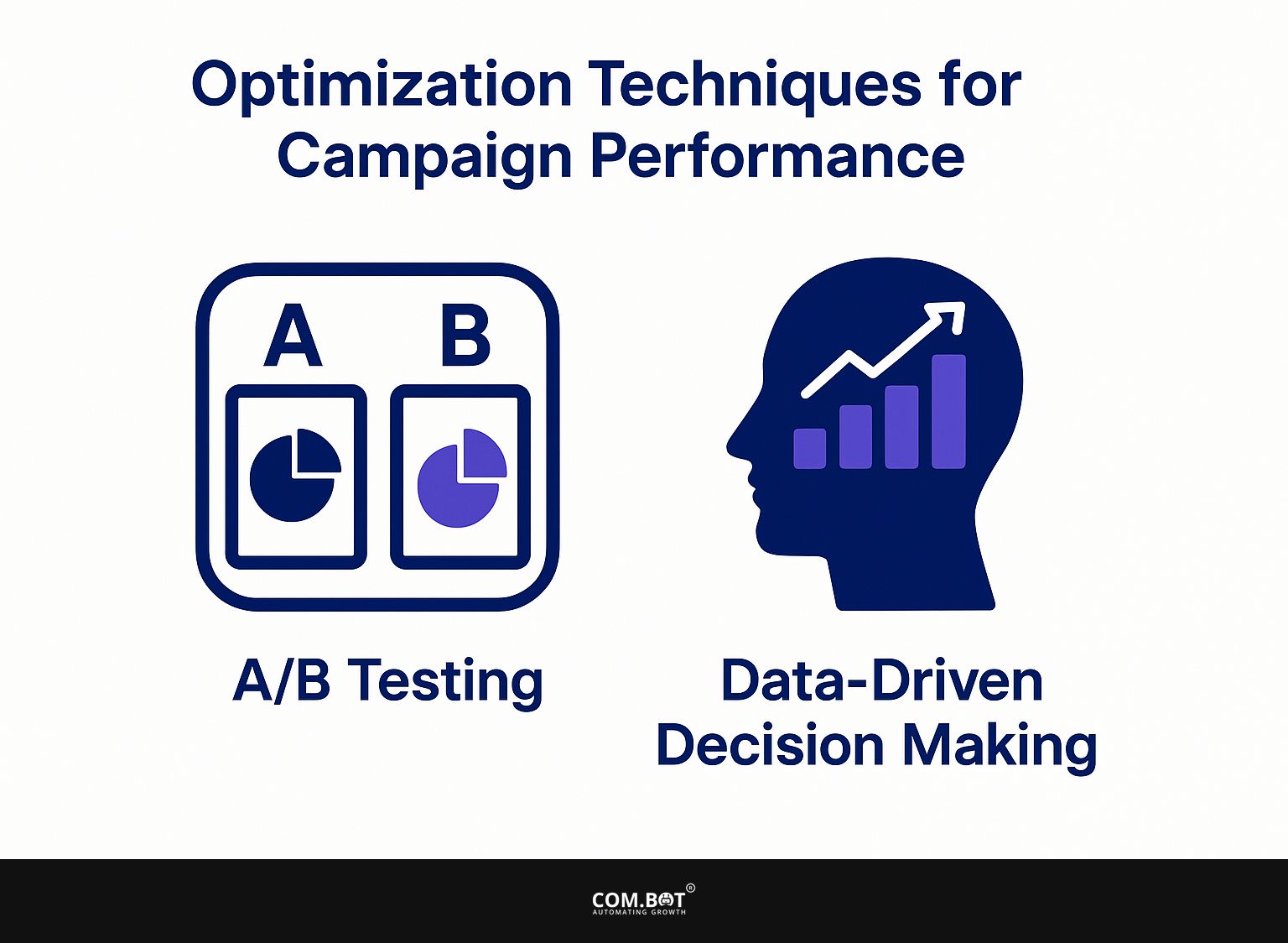
1. A/B Testing Strategies
A/B testing lets marketers compare two campaign versions to see which one works better, increasing conversion rates a lot.
To run effective A/B tests, follow these steps:
- First, define your goal, such as increasing email open rates.
- Next, choose a testing tool such as Optimizely or Google Optimize.
- Create two versions of your content-perhaps varying subject lines or call-to-action buttons.
- Launch the test to a randomly selected audience segment, monitoring metrics like click-through rates and conversion rates.
For example, a company that tested two email subject lines saw a 20% increase in opens with the winning variant. Use this information to plan upcoming campaigns and keep improving your methods.
2. Data-Driven Decision Making
Using data to make decisions helps improve marketing by focusing efforts on what works best, leading to more successful campaigns. To make sense of data, begin with analytics tools such as Improvado.
For instance, a digital marketing agency analyzed their ad spending across multiple channels, revealing that Facebook ads had a lower ROI compared to Google Ads. By reallocating 30% of their budget from Facebook to Google, they increased overall conversion rates by 25%.
Regularly checking metrics such as customer acquisition costs and lifetime value helps spot underperforming campaigns, allowing for adjustments to improve ad spending and results.
Integrating Campaign Analytics with Other Tools
Connecting campaign analytics with tools such as CRMs and marketing automation platforms improves data usefulness and campaign operations. This approach aligns with the principles outlined in our analysis of harnessing AI bots for business intelligence.
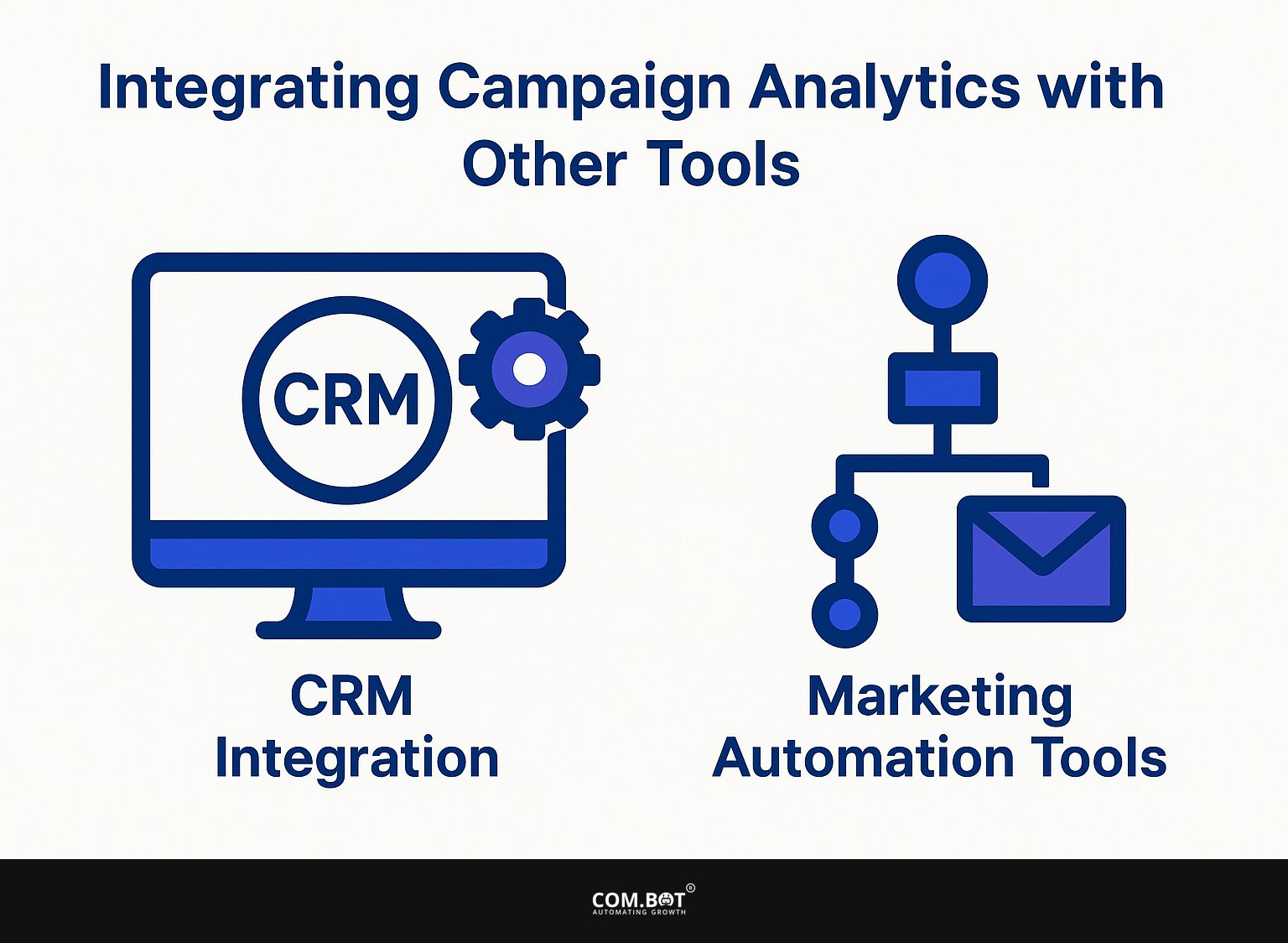
1. CRM Integration
CRM integration allows marketers to align campaign analytics with customer engagement data for better targeting. By using tools like Google Analytics and HubSpot within Salesforce, businesses can improve their marketing plans.
A clothing store combined their CRM data with website traffic information to study customer buying habits. This led to email campaigns that increased sales by 30%.
A travel agency used real-time data from their CRM to find customer groups with high interest, resulting in specially designed offers and more bookings. This strategic mix of customer data and analysis improves targeting and builds stronger customer relationships.
2. Marketing Automation Tools
Using marketing software with data analysis helps simplify running campaigns and improve how users interact. For example, HubSpot provides tools that let businesses set up automatic social media posts, divide their audience into groups, and send customized email campaigns.
A notable success story comes from a mid-sized e-commerce brand that implemented HubSpot’s lifecycle tracking. They identified customer pain points through analytics, enabling them to tailor their marketing messages more effectively.
As a result, they experienced a 30% increase in engagement rates and a 20% uplift in conversions within three months. This shows how using automation and data analysis can change marketing actions into results that can be measured.
Challenges in Campaign Analytics
Even with the benefits, marketers encounter problems in campaign analytics that can obstruct proper evaluation of performance.
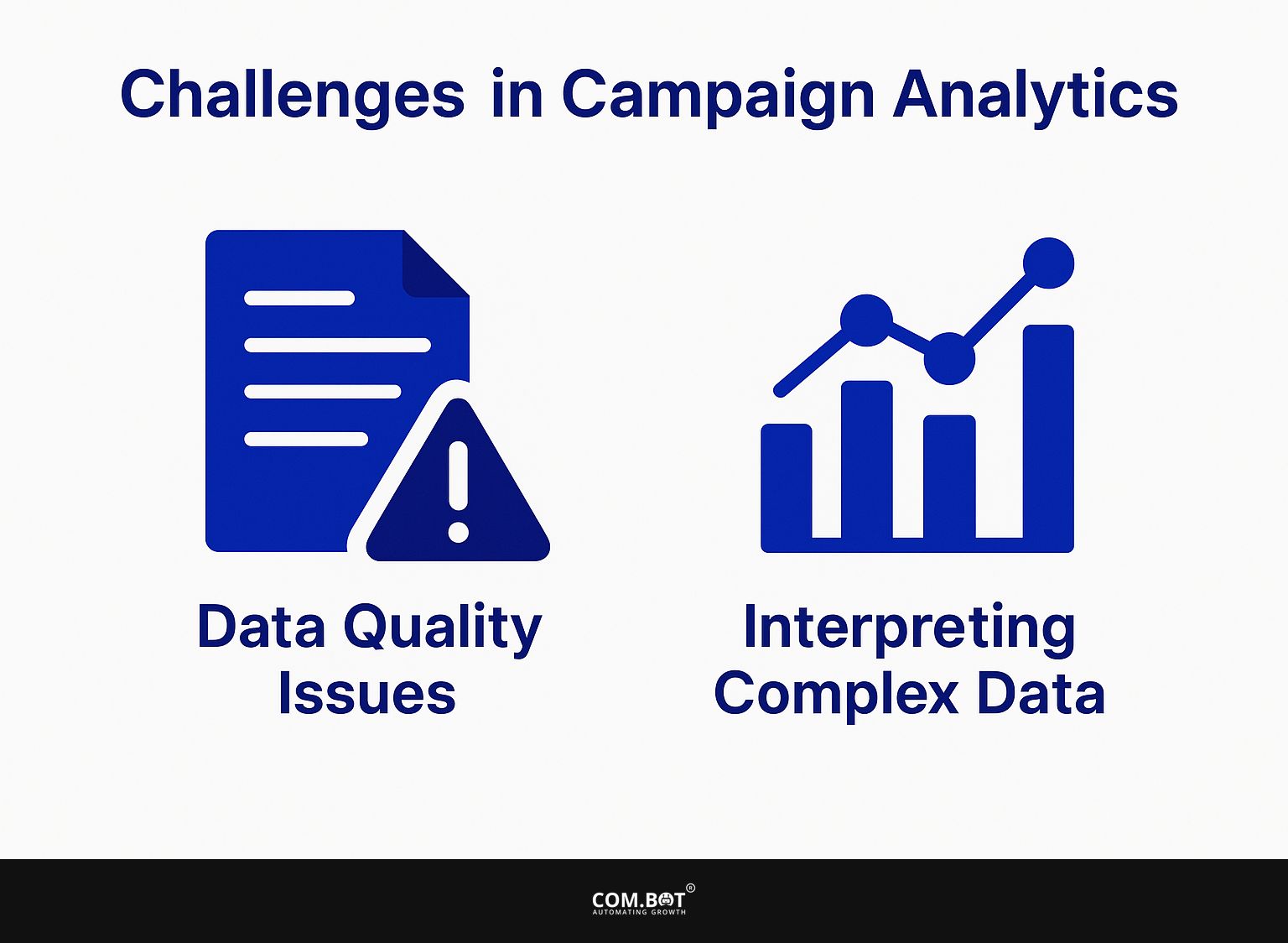
1. Data Quality Issues
Data quality issues can significantly skew campaign performance metrics, leading to misguided decisions. To mitigate these issues, implement a regular data audit schedule. Begin by using Google Tag Manager to make sure tracking codes are properly set up on your website.
If discrepancies are found, tools like Google Analytics can help identify specific pages with incomplete data. Look at your analytics weekly to refresh your tracking settings and correct any mistakes fast.
Setting clear rules for data entry for your team can help avoid mistakes later. Over time, these methods will make your data more reliable, which helps in making better decisions.
2. Interpreting Complex Data
Figuring out large sets of data can be tough for marketers, and this often leads to errors in evaluating campaign results. Marketers can use tools like Tableau or Google Data Studio to turn raw numbers into clear graphs and charts, which simplifies data analysis.
Coca-Cola uses these tools to make dashboards that show how customers are interacting, allowing for fast decisions. Using these tools, brands can monitor key performance indicators and modify campaigns using current data.
Using A/B testing tools like Optimizely can improve strategies by looking at user behavior and changing content based on information.
Future Trends in Campaign Analytics
Campaign analytics is becoming more connected with new technologies like AI and predictive analytics, offering new avenues for targeting audiences effectively. This evolution is largely driven by innovations such as AI-powered microtargeting strategies, which enable marketers to hone in on specific user segments with precision.
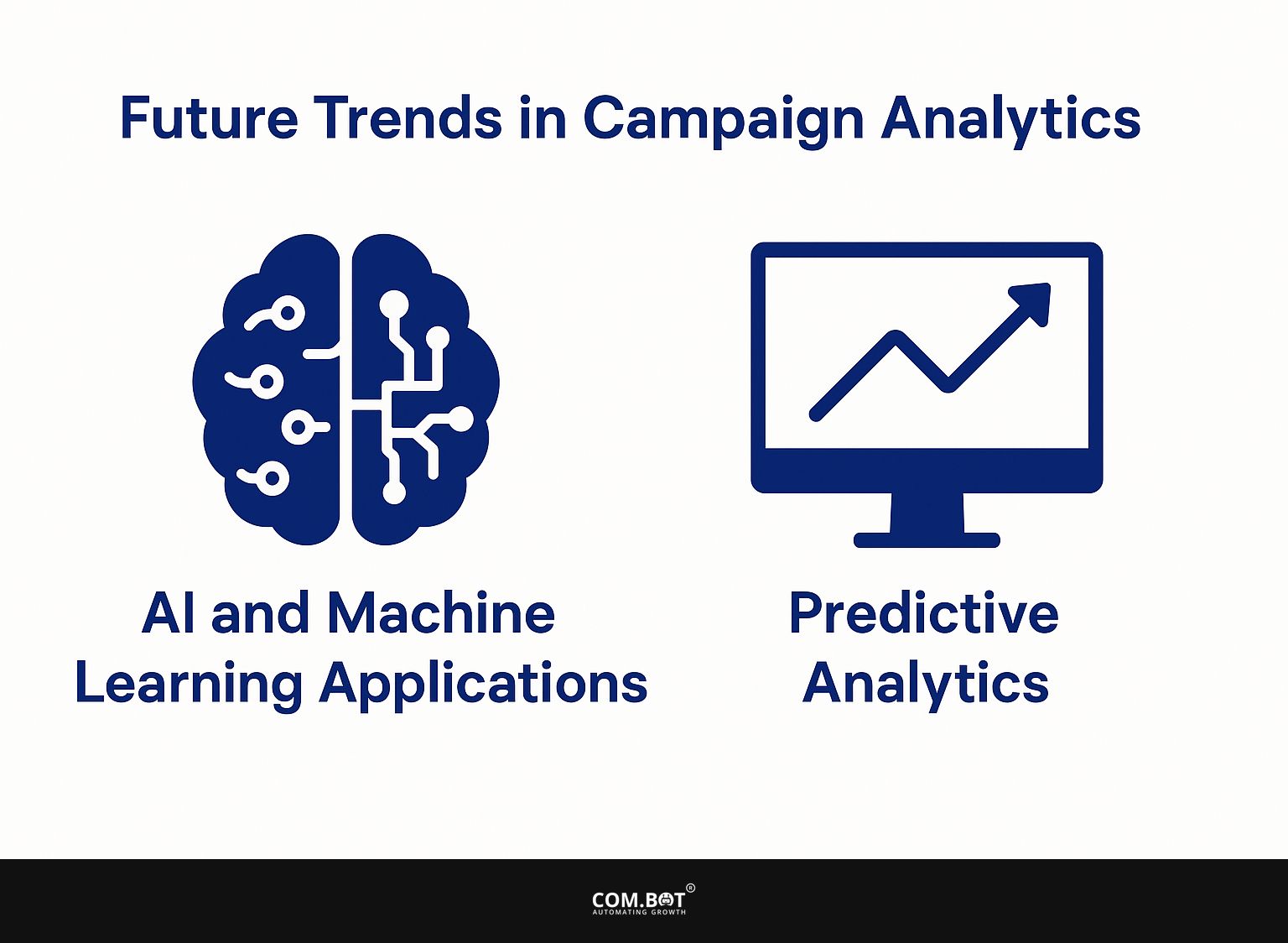
1. AI and Machine Learning Applications
AI and machine learning are changing campaign analytics by handling data processing automatically and improving prediction abilities.
For example, brands like Coca-Cola use AI tools like Salesforce Einstein to study how people feel about them on social media. This helps them create campaigns that connect with their audience.
Unilever uses Google’s AI to predict sales patterns and adjust marketing strategies using up-to-date information.
To begin using AI in your marketing efforts, look into tools such as:
- HubSpot (for customer insights)
- Tableau (for data visualization)
- Adobe Analytics (for detailed performance analytics)
Implementing these can lead to more targeted marketing efforts and improved ROI.
2. Predictive Analytics
Predictive analytics relies on past information to guess what might happen next, letting marketers adjust campaigns based on what users are likely to do. By utilizing tools like Google Analytics 360, marketers can analyze user patterns to create targeted campaigns.
For instance, using predictive modeling, a retail brand identified that customers who viewed certain products were 30% more likely to purchase. This information helped them create customized email campaigns, leading to a 25% rise in conversions.
Similarly, a travel company used predictive analytics to adjust pricing based on demand forecasts, leading to improved revenue during peak travel periods.
These examples show how predictive analytics can greatly improve decision-making in managing campaigns.
Frequently Asked Questions
1. What is Campaign Analytics and why is it important?
Campaign Analytics is a set of tools and techniques used to gather, analyze, and interpret data related to marketing campaigns. It helps businesses track the effectiveness of their campaigns and make data-driven decisions to improve their marketing strategies.
2. What are the key features of Campaign Analytics?
The key features of Campaign Analytics include data tracking, performance measurement, audience segmentation, A/B testing, and real-time reporting. These features give important information and help businesses improve their campaigns for better results.
3. How does Campaign Analytics help with campaign optimization?
Campaign Analytics allows businesses to track and measure the performance of their campaigns in real-time. This helps identify which campaigns are performing well and which ones need improvement. With this information, businesses can use data to make decisions and improve their campaigns for better results.
4. What is audience segmentation and how does it benefit campaign optimization?
Audience segmentation is the process of dividing a target audience into smaller groups based on characteristics such as demographics, behavior, and interests. This approach helps businesses design specific campaigns for various groups of people, resulting in better campaign fine-tuning and improved outcomes.
5. What is A/B testing and how can it be used in Campaign Analytics?
A/B testing, also known as split testing, is a method of comparing two versions of a marketing campaign to determine which one performs better. This technique can be used in Campaign Analytics to test different elements of a campaign, such as ad copy or design, and make data-driven decisions on which version to use for better optimization.
6. How can businesses use real-time reporting in Campaign Analytics to improve their campaigns?
Real-time reporting in Campaign Analytics allows businesses to track and monitor their campaigns as they are happening, providing up-to-date information on performance. This helps businesses make quick adjustments and optimizations to their campaigns in real-time, leading to better results and ROI.
